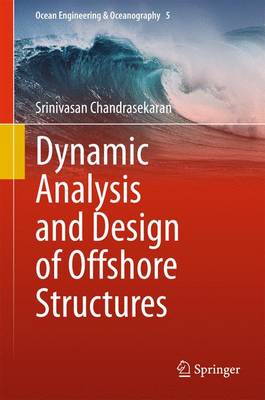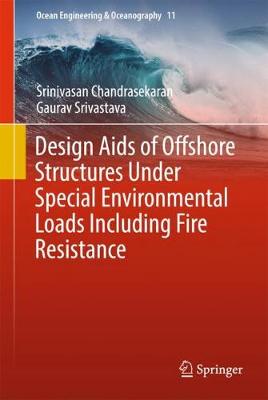Ocean Engineering & Oceanography
2 primary works
Book 9
Dynamic Analysis and Design of Offshore Structures
by Srinivasan Chandrasekaran
This book attempts to provide readers with an overall idea of various types of offshore platform geometries. It covers the various environmental loads encountered by these structures, a detailed description of the fundamentals of structural dynamics in a class-room style, estimate of damping in offshore structures and their applications in the preliminary analysis and design. Basic concepts of structural dynamics are emphasized through simple illustrative examples and exercises. Design methodologies and guidelines, which are FORM based concepts are explained through a few applied example structures. Each chapter also has tutorials and exercises for self-learning. A dedicated chapter on stochastic dynamics will help the students to extend the basic concepts of structural dynamics to this advanced domain of research. Hydrodynamic response of offshore structures with perforated members is one of the recent research applications, which is found to be one of the effective manner of retrofitting offshore structures. Results of recent research, validated by the experimental and numerical studies are presented to update of the readers. Integration of the concepts of structural dynamics with the FORM-evolved design of offshore structures is a unique approach used in this book. The book will prove useful to the practicing and consulting offshore structural engineers, as also to students and researchers working in the field.
Book 11
Design Aids of Offshore Structures Under Special Environmental Loads including Fire Resistance
by Srinivasan Chandrasekaran and Gaurav Srivastava
This book provides detailed analysis methods and design guidelines for fire resistance, a vital consideration for offshore processing and production platforms. Recent advancements in the selection of various geometric structural forms for deep-water oil exploration and production require a detailed understanding of the design of offshore structures under special loads. Focusing on a relatively new aspect of offshore engineering, the book offers essential teaching material, illustrating and explaining the concepts discussed through many tutorials. It creates a basis for designing new courses for students of ocean engineering and naval architecture, civil engineering, and applied mechanics at both undergraduate and graduate levels. As such, its content can be used for self-study or as a text in structured courses and professional development programs.

